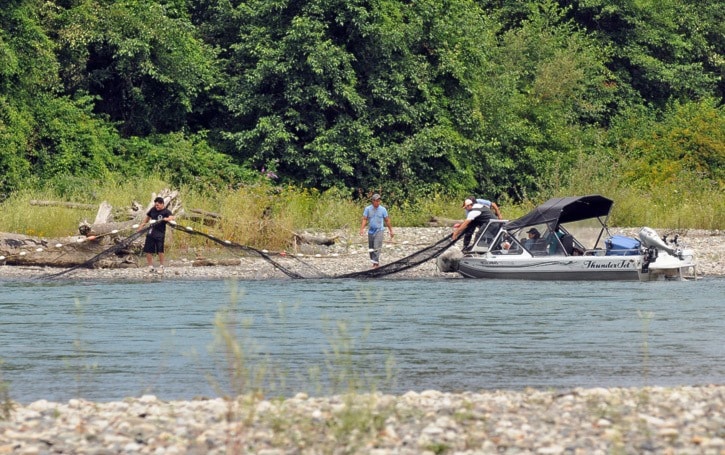A once thriving aboriginal fishery for Chilliwack Lake sockeye was revived on the Chilliwack/Vedder River system this week for the first time in years.
The fishery plan from Fisheries and Oceans Canada called for a six-day aboriginal fishery upstream from the Vedder bridge for dip-netting and spear fishing, while the beach seining was conducted on Tuesday and Wednesday, mostly in the Vedder canal.
It's being described as a type of restoration, or resurrection fishery, because it was a traditional fishery of the Pilalt, Semath and Ts'elxweyeqw tribes, which now have Sto:lo descendants fishing.
"It has been some time since the Pilalt, Semath and Ts'elxweyeqw tribes have had opportunity to 'resurrect' what was once a thriving and robust traditional fishery," wrote Murray Ned, fisheries manager of Sto:lo Tribal Council, in a recent letter.
The current run size estimate for Chilliwack Lake sockeye is 200,000, according to the Fraser River Panel — which is the highest estimate in years.
"Our technical advisors suggest that the Chilliwack Sockeye are rather cyclical and this is one of the years when First Nations could have opportunity to renew a traditional fishery within their respective territories, and in a way that can be harmonized with other privileged user groups," Ned wrote.
Eleven First Nations communities around Chilliwack were involved, and it's been decades since the last time the sockeye were abundant enough to be targeted this way.
Some of the stakeholders met to discuss it on July 19, with the goal of avoiding any conflict on the river during the rare fishery. Recommendations were put forth on how to avoid the hotspots and where to direct the fishery.
Some attendees were part of the Lower Fraser River Peacemakers, a group that has been actively collaborating for the past four years to minimize and prevent any confrontations between First Nations and recreational anglers on the Fraser River.
"Peacemakers, First Nations, DFO and the Recreational sector can play a big role in ensuring that all fisheries are conducted in an orderly and manageable fashion as the First Nations with an interest plan on implementing seining, dipnetting and spearing activities in various areas through out the Vedder/Chilliwack system," Ned's letter continued.
Rod Clapton of the BC Federation of Drift Fisheries participated in meetings before the fishery opening, and is a member of the Peacemakers.
"Dialogue is the most important thing," he said. "From a recreational perspective, we support the heritage aspect of this fishery."
He hopes one day there might be a recreational opening as well for Chilliwack sockeye.
In the meantime, the aboriginal fishery could be a wonderful demonstration fishery, he suggested.
"I think people would enjoy watching the traditional methods."
jfeinberg@theprogress.com
twitter.com/CHWKjourno
